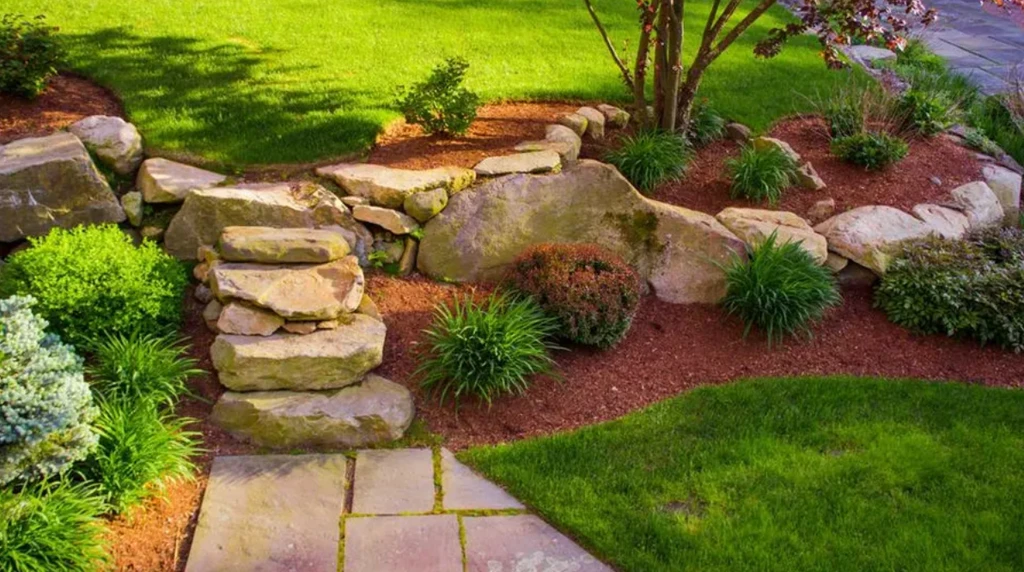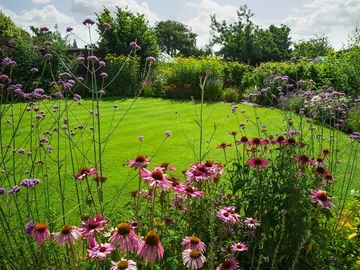Transforming your outdoor space into a stunning oasis can be a daunting task, but with the right guidance, it can become a reality. Landscaping is more than just mowing the lawn and trimming the bushes; it's an art form that requires creativity, planning, and attention to detail. A well-designed landscape can not only enhance your home's curb appeal but also create a functional and peaceful outdoor living area perfect for relaxation, entertainment, and making memories with family and friends.
In this article, we'll share expert tips and ideas to help you get started on your landscaping journey. From planning and design to plant selection and hardscaping, we'll cover the essential elements to consider when creating your dream outdoor space. Whether you're a seasoned gardener or a beginner, our landscaping tips will inspire you to turn your yard into a beautiful and functional haven that you'll love spending time in. Let's begin...
Planning and Design
An effective landscape design scheme aims to combat erosion, particularly in hilly regions, by incorporating retaining walls. These structures not only serve a practical purpose by holding the soil in place but also add aesthetic value by creating a visually appealing backdrop for vegetation and art pieces.
Prior to commencing the planning process, it is essential to evaluate the current conditions of your yard, including factors such as sunlight exposure, soil quality, and drainage. Only after this assessment can you proceed with developing a theme or style by outlining a rudimentary design.
Some key elements to think about when planning and designing
1. Identify your style
What images come to mind when you look at your yard? Are you envisioning a swimming pool surrounded by lush, vibrant plants? Or maybe an outdoor kitchen complete with a pizza oven and sound system? These mental images and thoughts can provide insight into your landscape style. Consider the overall look and feel you want to achieve in your outdoor space. This could range from a formal, manicured garden to a more natural, organic landscape.
2. Research plants and materials
It is important to select plants, trees, and hardscape materials that are appropriate for the climate and soil conditions in your area. It is crucial to have knowledge about the types of plants that thrive in specific soil or grass types. The Rose of Sharon, American Arborvitae, and Common Holly are all examples of stunning, functional, and low-maintenance plants that can enhance the visual appeal and practicality of any landscape. Additionally, hedge Hedge Maple is an excellent choice for creating a formal and attractive hedge.
To determine the suitable types of seeds for the climate and soil in Zimbabwe, thorough research is necessary. Seeds offer a wide variety of plant options, although they may require a longer time to grow compared to other planting materials.
Cuttings can be an effective method for propagating plants, but it is essential to research which plants are suitable for this technique. Certain plants, such as fuchsia or roses, can be easily propagated using cuttings.
3. Create a layout
When designing the layout for your Zimbabwean yard and garden, it is important to take into account the following factors: you should establish boundaries by clearly outlining the limits of your yard and deciding how you will divide the space into various sections. You may want to allocate specific areas for social gatherings, gardening, or simply unwinding. Incorporate existing elements: Instead of removing or changing them, try to incorporate existing features like trees, rocks, or pathways into your design. This approach can result in a more cohesive and harmonious overall look.
4. Consider privacy
Consider incorporating privacy screens, hedges, or fences into your outdoor area to establish a feeling of seclusion and safeguard your space from unwanted scrutiny, taking into account your geographical location and personal preferences.
5. Think about water features:
Incorporating a pond, fountain, or stream into your landscape can enhance its tranquillity and beauty. Prior to installation, it is essential to carefully assess the maintenance and safety requirements
Include seating areas
By incorporating comfortable outdoor seating options such as a patio set, hammock, or cosy lounge chairs, you can transform your garden into a warm and inviting area where you can unwind and appreciate the beauty of nature.
Plant Selection and Care
It is crucial to select the appropriate plants for your specific climate and soil conditions, as previously mentioned. By considering factors such as your hardiness zone, temperature changes, precipitation levels, soil composition, sunlight exposure, and seeking advice from local professionals, you can make well-educated choices. For instance, Coneflowers are low-maintenance and can self-sow, thriving in various soil types with good drainage while also attracting birds and butterflies. Catmint is another plant option suitable for borders, rock gardens, and containers, boasting aromatic flowers that entice butterflies and bees. Not only do these plants offer the advantage of attracting wildlife, but they also provide a sensory delight with their fragrant blooms.
Hardscaping and Outdoor Features
When designing patios, walkways, and driveways for your Zimbabwe garden, there are several factors to take into consideration. One important factor is durability and maintenance. It is advisable to select materials that are durable and require minimal upkeep, such as pavers, natural stone, or concrete. Another factor to consider is cost and budget. It is essential to establish a budget and choose materials that fall within it. For instance, poured concrete is generally more cost-effective compared to natural stone. Lastly, style and aesthetics should also be taken into account. It is recommended to choose materials and designs that complement the overall style of your garden and your home.
Outdoor lighting can enhance the ambiance of your Zimbabwe garden in the evenings. It is recommended to install lights on your patio, walkways, and garden. There are different types of outdoor lights available, including solar-powered, LED, and traditional lighting. Water features like small ponds or fountains can bring a sense of tranquillity to your garden. To maintain a sustainable water feature, consider using drought-tolerant plants and water-saving techniques.
 Continue with Facebook
Continue with Facebook
 Continue with Email
Continue with Email














